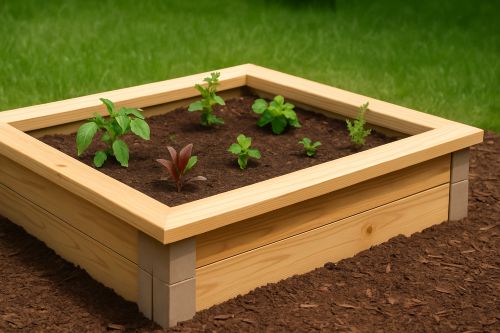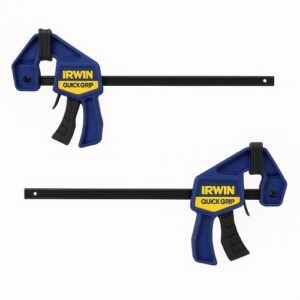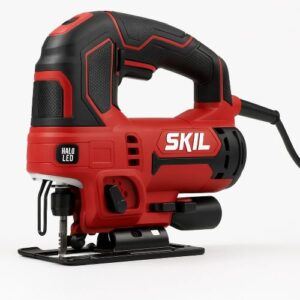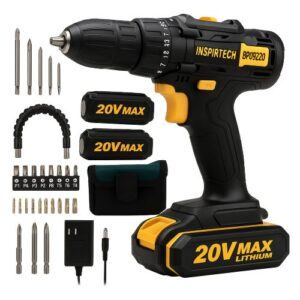Building a Wood Planter Box: Choosing the Right Wood
Building a Wood Planter Box is one of those quick weekend wins that makes you feel like a backyard boss. It doesn’t take fancy tools, a giant workshop, or a master carpenter’s skill set —
just a few boards, some screws, and a little bit of sweat.
Before you know it, you’ve got a clean, sturdy planter sitting in your yard, ready to grow tomatoes, peppers, herbs, or whatever green goodness you want to throw in it.
In this guide, I’ll walk you through the whole build step-by-step, drop in a couple of my favorite pro tips, and help you avoid the rookie mistakes that make planter boxes fall apart.
Let’s get to it and build something you’ll be proud to show off.
🌱 Why Build a Wood Planter Box?
A good wood planter box instantly turns any patch of yard, patio, or deck into a clean, organized growing space. No digging. No fighting terrible soil. No wrestling with weeds every other day. You’re basically creating a little VIP lounge for your plants — all you do is fill it with quality soil and let the garden magic happen.
Planter boxes also give you total control: height, width, depth, drainage… you build it exactly the way you want it. Whether you’re growing tomatoes, herbs, strawberries, or a small “salad garden,” a sturdy wooden box keeps everything neat, accessible, and looking sharp. And the best part? You can build one in an afternoon with basic tools.
Materials & Tools You’ll Need
Before you start cutting boards and slinging screws, gather everything you need so the build goes smooth from start to finish.
A planter box isn’t complicated, but having the right materials on hand makes the job way easier — especially when you’re working solo.
Materials
-
Lumber for the sides (common choices: 1×6, 1×8, or 2×6 boards)
-
Corner blocks or posts for support
-
Exterior wood screws
-
Landscape fabric (optional but helpful for drainage)
-
Soil or raised-bed mix
-
Plants, herbs, or seeds of your choice
Tools
-
Tape measure
-
Circular saw or jigsaw
-
Drill/driver
-
Clamps
-
Sander (orbital or hand sanding block)
-
Carpenter’s square
-
Pencil
Recommended Tools to Make This Build Easier
You can build this planter box with basic gear, but a few reliable tools make the whole job smoother, straighter, and a whole lot more enjoyable. These are the tools that keep your cuts clean, your boards aligned, and your screws going in exactly where they should.
Clamps
Clamps act like a third hand while you’re lining up boards or securing corners before driving screws. They keep everything square and steady so the box doesn’t shift during assembly.
Jigsaw
A good jigsaw gives you clean, accurate cuts without needing a full table saw setup. It’s perfect for trimming boards to length, cutting notches, or making quick adjustments on the fly.
Drill/Driver
From pre-drilling corners to driving every screw in the build, your drill is going to do most of the heavy lifting. A solid drill/driver combo keeps everything tight and makes assembly fast and frustration-free.
🌟 Amazon Product Suggestion:
✔️ IRWIN QUICK-GRIP 6” One-Handed Mini Bar Clamp Set
(4-Pack)
These IRWIN Quick-Grip clamps are my go-to shop workhorses. Light, fast, and truly one-handed, they’re perfect for small builds like display cases, shelves, frames, and trim. Even with their compact size, they deliver solid pressure, lock cleanly, release smooth, and won’t dent your walnut thanks to the non-marring pads. If you want clamps you’ll actually enjoy using — these are the ones.
Why it’s great:
✓ One-handed operation makes positioning and clamping effortless
✓ Strong, consistent grip for small cabinet and display case builds
✓ Soft, non-marring pads protect delicate woods like walnut and cherry
✓ Lightweight design lets you run several clamps at once without fatigue
✓ Perfect for tight spots where full-size bar clamps won’t fit
✓ Extremely reliable — no slipping, no bending, no cheap-plastic flex
✓ Great for beginners and pros who want fast, frustration-free clamping
🌟 Amazon Product Suggestion:
✔ SKIL 6-Amp Corded Jig Saw
A dependable jigsaw with solid power and smooth control. The SKIL 6-Amp delivers clean curves, fast cuts, and easy bevel adjustments, making it a great all-around tool for woodworking and DIY projects.
Why it’s great:
✔ Powerful 6-amp motor for hardwoods and plywood
✔ 4-stage orbital action for smooth or aggressive cutting
✔ Bright HALO LED for clear visibility on cut lines
✔ Tool-free bevel adjustment for quick angled cuts
✔ Comfortable grip with low vibration for better accuracy
🌟 Amazon Product Suggestion:
✔️ INSPIRITECH 20V Cordless Drill
(My Personal Choice!)
This is the cordless drill I use in my own shop, and it’s been rock-solid. The INSPIRITECH 20V kit includes two batteries, a charger, drill/driver bits, a flexible extension, and a handy tool bag. With 24 torque settings and a comfortable grip, it’s perfect for mailbox builds, repairs, and everyday woodworking.
Why it’s great:
✔️ Two 20V batteries — work nonstop
✔️ Includes bits, extension, and tool bag
✔️ Lightweight and easy to control
✔️ Strong enough for outdoor projects
✔️ Affordable, complete starter kit
🪚 Step 1: Cut Your Boards to Size
Start by cutting all your boards to the lengths you want for your planter box.
Most simple boxes use four equal sides, but you can size yours however you want —
long and narrow, square, tall, short… it’s your garden, so build what fits it best.
Lay out your boards and mark each cut with a sharp pencil and a square so your lines stay straight.
Then grab your jigsaw and make clean, steady cuts, letting the blade do the work.
Don’t force it — smooth cuts mean smoother assembly later.
If you’re building multiple boxes, go ahead and cut all the pieces at once.
It keeps your measurements consistent and saves time when you start putting everything together.
👉👉 Pro Tip: Use your first perfectly cut board as the template for the rest.
Faster, cleaner, and all your sides match.
🔩 Step 2: Build the Side Panels
Now that your boards are cut, it’s time to assemble the sides of your planter box.
Lay two boards flat on your work surface, line up the edges, and clamp them together so nothing shifts. This is where those clamps earn their keep — they keep everything steady while you work.
Next, grab your drill and pre-drill along the joint.
This keeps the boards from splitting and gives your screws a straight shot. Run a few exterior screws through each board to lock the panel together.
Repeat the same process for all four sides.
Once you’ve got your panels built, you’ll see the shape of your planter starting to come together —
and it already feels like a real project.
👉👉 Pro Tip: Don’t overtighten screws on the panels — it can warp the boards and throw off your corners.
🧱 Step 3: Attach the Corners
With all four side panels built, it’s time to bring this box together.
Stand two panels upright and align the edges to form a clean 90° corner.
Clamp them in place so nothing shifts, then pre-drill and drive screws through the end panel into the adjoining one.
Add your corner blocks or posts inside the corners for extra strength — this keeps the box square and helps it handle the weight of soil later on.
Repeat this on all four corners until your planter box is fully assembled and solid.
👉👉 Pro Tip: Check each corner with a square before driving screws. Fixing a crooked planter later is a nightmare.
🪵 Step 4: Add the Bottom (Optional)
If you want your planter box raised off the ground or sitting on a deck, you can add a simple slatted bottom.
Cut a few boards to fit across the base and space them out slightly for drainage.
Set them in place and drive screws into the corner supports to lock everything down.
If you’re placing your planter directly on the ground, you can skip the bottom altogether.
Just line the inside with landscape fabric before adding soil, and you’re good to go.
👉👉 Pro Tip: Leave small gaps between bottom boards so excess water can drain out and keep your soil from getting soggy.
🌿 Step 5: Line the Inside (Optional but Helpful)
Before you load in the soil, add a layer of landscape fabric inside the planter box.
This helps keep the soil contained, improves drainage, and stops dirt from washing out through the seams over time.
Just cut the fabric to size, press it into the corners, and staple it along the top edges if you want it extra secure.
If you’re planting directly in the ground or using thick boards, you can skip this step —
but it does help your planter last longer.
👉👉 Pro Tip: Let the landscape fabric run a little high and trim it after filling the box — it’s way easier than trying to cut it perfect upfront.
🌱 Step 6: Fill It Up and Start Planting
Now for the fun part.
Add your soil or raised-bed mix and spread it out evenly, making sure it reaches all the corners.
Give the soil a light watering to settle it, then plant your veggies, herbs, or flowers according to the spacing they need.
Once everything’s in the ground, top it off with a little extra soil if needed, and give your plants a good drink to help them settle in.
👉👉 Pro Tip: Water the soil before planting — it settles the mix and prevents your plants from sinking later.
Final Thoughts…
Building a Wood Planter Box is one of those quick, satisfying projects that pays you back every season. You end up with a clean, sturdy box that makes planting easier, keeps your garden organized, and looks great in any backyard. With just a few boards, a drill, a jigsaw, and a little bit of time, you can create something that lasts for years and helps your plants thrive.
If you’re looking for more beginner-friendly builds, check out my guides on How To: Display Case, DIY Floating Shelves, and Essential Woodworking Tools Every Beginner Should Have. Each one will help you build confidence, sharpen your skills, and keep that woodworking momentum going.
Now get out there, throw some soil in that box, and grow something awesome.
Craft it. Shape it. Own it!
🔧 Need More Plans Or Ideas?
👉👉 Click here to learn more about Ted’s Woodworking Plans:
If you want access to hundreds of additional woodworking projects and detailed tutorials, check out my full review of Ted’s Woodworking Plans.
It’s packed with step-by-step builds that are perfect for weekend projects.
💡 Turn Your Woodworking Passion Into Income
👉👉 Click here to learn more about Wealthy Affiliate
SawdustSmarty.com started as a small hobby — and grew because I finally learned how to build a real website.
If you’ve ever thought about turning woodworking into a side business or income stream, the training at Wealthy Affiliate is hands-down what I recommend.







